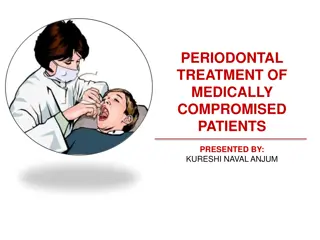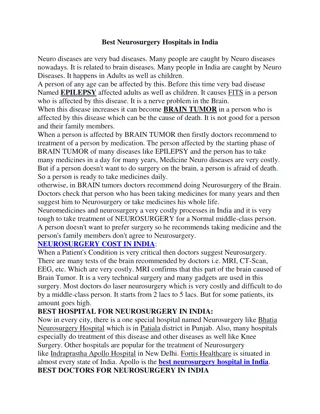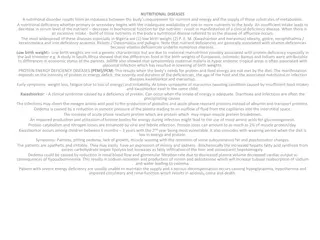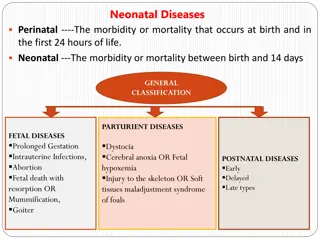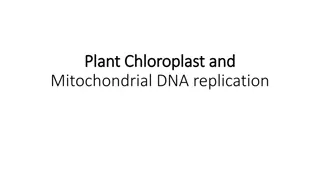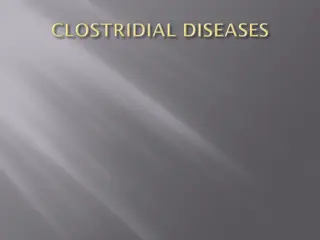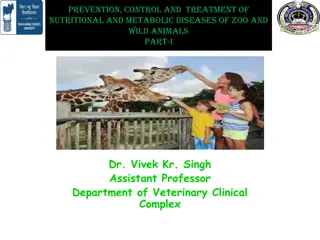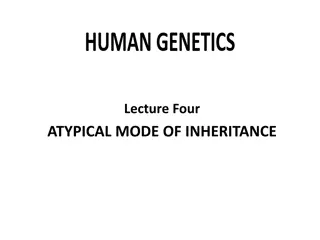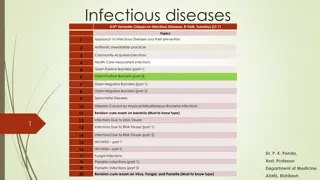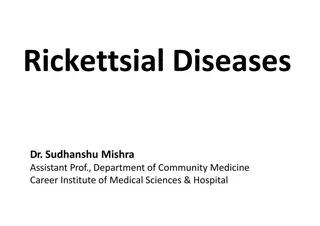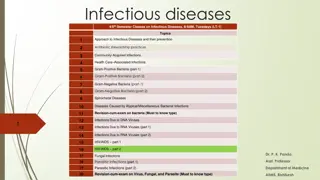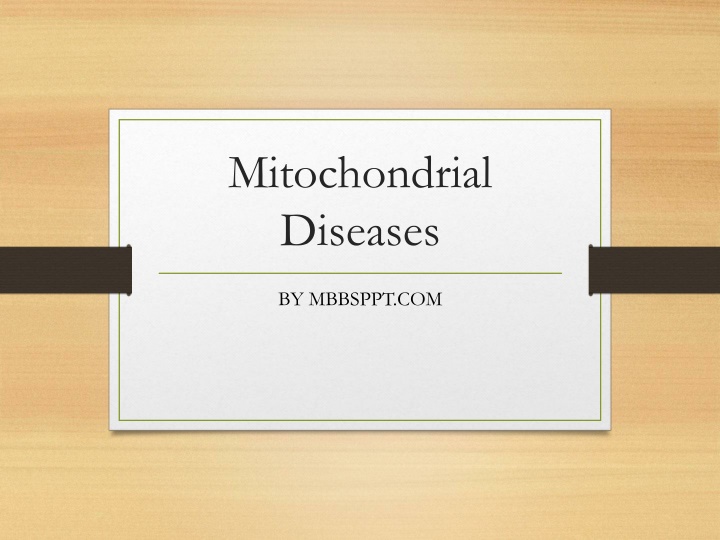
Mitochondrial Diseases and Their Genetic Implications
Explore the complex world of mitochondrial diseases, their impact on various organ systems, and the crucial role of mitochondrial DNA in these disorders. Discover how disturbances in mitochondrial metabolism can lead to a range of health conditions, from rare childhood diseases to common ailments like heart disease and diabetes.
Download Presentation

Please find below an Image/Link to download the presentation.
The content on the website is provided AS IS for your information and personal use only. It may not be sold, licensed, or shared on other websites without obtaining consent from the author. If you encounter any issues during the download, it is possible that the publisher has removed the file from their server.
You are allowed to download the files provided on this website for personal or commercial use, subject to the condition that they are used lawfully. All files are the property of their respective owners.
The content on the website is provided AS IS for your information and personal use only. It may not be sold, licensed, or shared on other websites without obtaining consent from the author.
E N D
Presentation Transcript
Mitochondrial Diseases BY MBBSPPT.COM
Mitochondrial Diseases The term mitochondrial cytopathy refers to a diverse group of inherited or acquired disorders. It is heterogeneous group of disorders. Can occur across all age groups. Deficient energy production caused from defects in the mitochondrial structure or the enzymes contained within this organelle are the basis for the clinical features of these illnesses. MBBSPPT.COM 2
Mitochondrial Diseases Mitochondrial biology is one of the fastest growing areas in genetics and medicine. Disturbances in mitochondrial metabolism are now known to play a role not only in rare childhood diseases, but have also been implicated in aging and many common diseases including heart disease, diabetes , Parkinson disease, and dementia. MBBSPPT.COM 3
Mitochondria Mitochondria are the main powerhouse for all cells in the body except red blood cells. The individual mitochondrion is a bilayer structure and contains four compartments: (1) An Outer Mitochondrial Membrane (2) A Heavily Folded Inner Mitochondrial Membrane (3) An Intermembrane Space That Exists Between These Two Membranes (4) The Matrix, Which Is Contained Within The Inner Membrane. MBBSPPT.COM 4
Mitochondria Numerous transport channels are present on the outer mitochondrial membrane. Most of the electron transport chain is embedded within the inner membrane. The inner membrane space holds the electrochemical gradient generated as hydrogen ions are pumped from the matrix while electrons are passed from one protein complex to another as part of electron transport chain (ETC) function. Hundreds of mitochondrial enzymes are located in the matrix. MBBSPPT.COM 5
Mitochondria Mitochondria participate in the process of oxidative phosphorylation (OXPHOS), the transformation of energy (from the breakdown of nutrients) in the presence of oxygen to adenosine triphosphate (ATP). Disorders of OXPHOS may affect the brain (central, peripheral, and autonomic nervous systems), muscles, kidneys, heart, liver, eyes, ears, pancreas, skin, and other organ systems. The conditions caused by defects in OXPHOS can range from subclinical to lethal. MBBSPPT.COM 6
Genetics of Mitochondrial Disorders Mitochondria are the only location of extra-chromosomal DNA within the cell and they are under the dual genetic control of both nuclear DNA and the mitochondrial genome. Mitochondrial DNA (mtDNA) is a 16,569-np double-stranded (16.6 kb in humans), closed, circular molecule located within the matrix of the double- membrane mitochondrion. Each human cell contains hundreds of mtDNA molecules. Human mtDNA encodes 13 of the 89 subunits of the mitochondrial respiratory chain, as well as the small (12S) and large (16S) ribosomal RNAs (rRNAs) and 22 tRNAs necessary for intramitochondrial protein synthesis . (DiMauro S, Schon EA. Mitochondrial respiratory-chain diseases. New Engl J Med. 2003;348:2656 68.) MBBSPPT.COM 7
The human mitochondrial genome. The map of the 16,569 bp mtDNA shows differently colored areas representing the protein-coding genes for the seven subunits of complex I (ND), the three subunits of cytochrome c oxidase (CO), cytochrome b (cyt b), and the two subunits of ATP synthase (A6 and A8), the 12S and 16S rRNAs (12S, 16S), and the 22 tRNAs identified by one-letter codes for the corresponding amino acids.
Unique aspects of Mitochondrial Genetics Mitochondrial genetics is different from Mendelian genetics in almost every aspect, from the uniparental inheritance of disease mutations, to the presence of many copies of the genome within a single cell and the basic mechanisms that underlie replication and transcription. Each mitochondrion contains two to 10 copies of mtDNA. The mtDNA is maternally inherited. The mtDNA can exist in a cell as a mixture of mutant and normal mtDNAs (heteroplasmy). The mtDNA do not recombine, and can undergo replicative segregation during meiotic or mitotic division to give pure genotypes (homoplasmic). MBBSPPT.COM 9
Comparison Between the Human Nuclear and Mitochondrial Genomes Characteristic Nuclear genome Mitochondrial genome Size ~3.3 x 109 bp 16,569 bp Number of DNA molecules per cell 23 in haploid cells; 46 in diploid cells Several thousand copies per cell Number of genes encoded ~20,000 30,000 37 (13 polypeptides, 22 tRNAs and 2 rRNAs) Gene density ~1 per 40,000 bp 1 per 450 bp Percentage of coding DNA ~3% ~93% Mode of inheritance Mendelian inheritance for autosomes and the X chromosome, paternal inheritance for the Y chromosome Exclusively maternal Replication Strand-coupled mechanism that uses DNA polymerases and Strand-coupled and strand-displacement models; only uses DNA polymerase Transcription Most genes are transcribed individually All genes on both strands are transcribed as large polycistrons. Recombination Each pair of homologues recombines during the prophase of meiosis There is evidence that recombination occurs at a cellular level but little evidence that it occurs at a population level Strachan T, Read A. P. Human Molecular Genetics 2ndedn (John Wiley and Sons, New York, 1999). 10
Why does mitochondrial DNA mutate? Mitochondrial DNA acquires mutations at 6 to 7 times the rate of nuclear DNA because: It lack protective histones. It is in close proximity to the electron transport chain, exposing it to high concentrations of free radicals, which can damage the nucleotides. It lack DNA repair mechanisms, which results in mutant tRNA, rRNA, and protein transcripts. Shoffner JM, Wallace DC. Oxidative phosphorylation diseases. In: Scriver CR, Beaudet AL, Sly WS, et al, editors. The metabolic and molecular bases of inherited disease. New York: McGraw-Hill, 1995:1535 1610. MBBSPPT.COM 11
Inheritance of Mitochondrial DNA The standard model of maternal inheritance has recently been challenged. Low levels of paternal transmission of mtDNA have been observed in crosses between mouse species, but not within species, although further studies showed that this paternal mtDNA was not transmitted to the subsequent generation.1 Studies of a patient with mitochondrial myopathy who carried a 2-bp pathogenic deletion in the NADH (reduced nicotinamide adenine dinucleotide) dehydrogenase subunit 2 (ND2) gene in his muscle mtDNA have also challenged the maternal inheritance of mtDNA.2 With the exception of skeletal muscle, all other tissues contained a single, maternally derived mtDNA haplotype. Subsequent studies of other patients with mitochondrial myopathies have not shown any evidence of paternal transmission. 3 Shitara, H., Hayashi, J. I., Takahama, S., Kaneda, H. & Yonekawa, H. Maternal inheritance of mouse mtDNA in interspecific hybrids: segregation of the leaked paternal mtDNA followed by the prevention of subsequent paternal leakage. Genetics 1998;148:851 7. Schwartz, M. & Vissing, J. Paternal inheritance of mitochondrial DNA. N. Engl. J. Med. 2002;347:576 80. Taylor, R. W. et al. Genotypes from patients indicate no paternal mitochondrial DNA contribution. Ann. Neurol. 2003;54:521 4. MBBSPPT.COM 12
Inheritance of Mitochondrial DNA At fertilization, all mtDNA derives from the ovum. A mother carrying a mtDNA point mutation will pass it on to all her children (males and females), but only her daughters will transmit it to their progeny. A disease expressed in both sexes but with no evidence of paternal transmission is strongly suggestive of a mtDNA point mutation. Colors reflect inheritance of the same mitochondrial genome MBBSPPT.COM 13
Clinical Manifestations of Mitochondrial Cytopathies Disorders due to mitochondrial mutations are heterogeneous, and clinical manifestations range from single organ involvement to multisystem disease. The same mutation or different mutation in the same mtDNA gene may give rise to very different clinical phenotypes, whereas the same phenotype may be due to different mutations. Variability in clinical manifestation is due to several factors: The proportion of heteroplasmy. Varying thresholds of biochemical expression for both the mutation and the tissue involved. The modifying effect of nuclear mitochondrial genes. MBBSPPT.COM 14
Clinical Manifestations of Mitochondrial Cytopathies Different types of mutations: Class I mutations: disorders of nuclear genes. Class II mutations: mitochondrial DNA point mutations. MBBSPPT.COM 15
Mitochondrial Diseases Due to mtDNA or nDNA Mutation DEFECTS OF MITOCHONDRIAL DNA DEFECTS IN NUCLEAR DNA AFFECTING MITOCHONDRIAL DNA OR ENZYME COMPLEXES PEO/multisystem with PEO KSS Pearson syndrome/KSS MELAS MERRF MiMyCa NARP/MILS LHON Diabetes, optic atrophy, deafness Tubulopathy, diabetes, ataxia Sideroblastic anemia Autosomal dominant / recessive PEO MNGIE Leigh syndrome Encephalopathy/cardiomyopathy GRACILE syndrome Hypertrophic cardiomyopathy Myopathy Optic atrophy, deafness, neuropathy GRACILE, growth retardation, amino aciduria, cholestasis, iron overload, lactic acidosis, and early death; KSS, Kearns-Sayre syndrome; LHON, Leber hereditary optic neuropathy; MELAS, mitochondrial encephalomyopathy, lactic acidosis and stroke-like episodes; MERRF, myoclonic epilepsy with ragged-red fibers; MILS, maternally inherited Leigh syndrome; MiMyCa, mitochondrial myopathy and cardiomyopathy; MNGIE, myoneurogastrointestinal encephalopathy; NARP, neuropathy, ataxia, and retinitis pigmentosa; PEO, progressive external ophthalmoplegia 16
Class I mutations: Disorders of Nuclear Genes Mitochondrial disorders of nuclear DNA (nDNA) origin include: Oxidative phosphorylation (OXPHOS) disorders (such as Leigh syndrome, paraganglioma) Defects in nuclear-encoded mitochondrial proteins for mtDNA integrity (progressive external ophthalmoplegia (PEO) and mitochondrial neurogastrointestinal encephalomyopathy (MNGIE) syndrome) Mitochondrial disorders with secondary effects on the OXPHOS system (Friedreich ataxia and hereditary spastic paraplegia). MBBSPPT.COM 17
Class I mutations: Disorders of nuclear genes Nuclear defects in OXPHOS related proteins Respiratory Disorders Features chain Complex I Leigh syndrome (LS) Starts mostly at birth or early childhood, fatal Other commonly observed phenotypes neurodegenerative disorder characterized associated with complex I deficiency are pathologically by bilateral lesions in the cardiomyopathy (11%), fatal infantile lactic brainstem, basal ganglia, thalamus and spinal acidosis (11%), macrocephaly with progressive cord, and characterized clinically by leukodystrophy (7%),and unspecified psychomotor retardation and brainstem or basal encephalopathy (21%) ganglia dysfunction. Complex II Mutations in both flavoprotein (SDHA) and Characterized by the presence of benign, highly iron-sulfur (SDHB) subunits- Hereditary vascularized tumors of parasympathetic ganglia paraganglioma (PGL) in the head and neck 18
Class I mutations: disorders of nuclear genes Nuclear defects in OXPHOS related proteins Respiratory Disorders Features chain Myopathy with or without myoglobinuria Tubulopathy, hepatopathy and encephalopathy Complex III Complex IV SURF1 gene - Leigh syndrome. Patients had hypertrophic cardiomyopathy, encephalopathy and ketoacidosis SCO2 gene a Mitochondrial copper chaperone- Hypertrophic cardiomyopathy and Encephalopathy SCO1 gene Familial hepatopathy and ketoacidotic coma. Mutations in ATP6 synthase - syndrome of neuropathy, ataxia and retinitis pigmentosa (NARP) and maternally-inherited Leigh Syndrome Complex V 19
Class I mutations: disorders of nuclear genes Nuclear defects in mitochondrial proteins for mtDNA Integrity The factors involved in mtDNA maintenance are all encoded by nuclear genes, and transported into the mitochondria. They include those involved directly in DNA processing, such as the mtDNA polymerase (POLG1), a helicase, a primase, and a ligase. Two human disease groups (progressive external ophthalmoplegia, PEO) and mitochondrial DNA depletion syndrome) result from these disturbed mtDNA maintenance mechanisms. MBBSPPT.COM 20
Class I mutations: Disorders of nuclear genes Nuclear defects in mitochondrial proteins for mtDNA Integrity The most common is PEO syndrome, which is transmitted in most cases as an autosomal dominant trait (adPEO), or more rarely as an autosomal recessive trait (arPEO). PEO- onset usually between 18 and 40 years of age, is characterized clinically by ophthalmoparesis and exercise intolerance. The combination of arPEO, severe gastrointestinal dysmotility, peripheral neuropathy, cachexia,diffuse leukoencephalopathy on brain MRI, and mitochondrial dysfunction (histological, biochemical or genetic abnormalities of the mitochondria) identifies the mitochondrial neurogastrointestinal encephalomyopathy (MNGIE). MBBSPPT.COM 21
Class II mutations: mitochondrial DNA mutations Servidei S. 2003, Rahman S, Hanna M. 2009 Disease/Syndrome Main Mutation Gene Location Mode of Inheritance PEO/multisystem with Single large deletion Sporadic PEO (progressive external Deletion duplication Sporadic ophthalmoplegia) nt-A3243G tRNA Leu(UUR) Maternal nt-C3256T tRNA Leu(UUR) Maternal KSS (Kearns-Sayre Single large deletion Sporadic syndrome ) Large tandem duplication Sporadic Pearson syndrome/KSS Single large deletion Sporadic MBBSPPT.COM 22
Class II mutations: mitochondrial DNA mutations Servidei S. 2003, Rahman S, Hanna M. 2009 Disease/Syndrome Main Mutation Gene Location Mode of Inheritance nt-A3243G tRNA Leu(UUR) Maternal MELAS(mitochondrial nt-T3271C tRNA Leu(UUR) Maternal encephalomyopathy, lactic acidosis and stroke-like episodes) nt-A8344G tRNA Lys Maternal MERRF(myoclonic epilepsy with ragged-red fibers) nt-C3254G tRNA Leu(UUR) Maternal MiMyCa(mitochondrial myopathy and cardiomyopathy) 23
Class II mutations: mitochondrial DNA mutations Servidei S. 2003, Rahman S, Hanna M. 2009 Disease/Syndrome Main Mutation Gene Location Mode of Inheritance Myopathy nt-A3243G Single large Deletion Sporadic nt-G15762A tRNA Leu(UUR) Maternal Cytochrome b Sporadic NARP/MILS (neuropathy, nt-T8993G ATPase 6 Maternal ataxia, and retinitis pigmentosa/ maternally inherited Leigh syndrome ) LHON (Leber hereditary optic nt-G3460A ND1 Maternal neuropathy) nt-G11778A ND4 Maternal nt-T14484C ND6 Maternal 24
Acquired mtDNA mutations in ageing and cancer Mitochondrial theory of ageing Progressive accumulation of somatic mutations in mtDNA during a lifetime leads to an inevitable decline in mitochondrial function These mutations then result in impaired function of the respiratory chain, leading to increased reactive oxygen species production and the subsequent accumulation of more mutations. The reactive oxygen species vicious cycle is believed to account for an exponential increase in oxidative damage during ageing, which results in the eventual loss of cellular and tissue functions through a combination of energy insufficiency, signaling defects, apoptosis. MBBSPPT.COM 25
Acquired mtDNA mutations in ageing and cancer Mitochondrial DNA mutations and cancer In 1998, Vogelstein and colleagues reported that mtDNA mutations were present in 7 out of 10 colorectal cancer cell lines that were studied. How these mutations accumulate to high levels in individual tumours is still unclear. In addition, there is no evidence of whether mtDNA mutations themselves contribute to the development of the tumour Although a direct link between the presence of the mtDNA mutation and the development of the tumour has not been made, the presence of a mtDNA mutation might prove significant in the detection of tumour recurrence and possibly in the detection of genotoxic damage. MBBSPPT.COM 26
Methods of Diagnosis The complex inheritance patterns and clinical heterogeneity of mitochondrial diseases often result in incorrect or delayed diagnosis of the affected individuals. A detailed clinical history and examination in conjunction with experienced interpretation of a battery of complex laboratory results is often required to make an accurate diagnosis. A detailed family history is essential in detecting a maternal line of inheritance. MBBSPPT.COM 27
Methods of Diagnosis Noninvasive screening tests An electrocardiogram or echocardiogram may demonstrate cardiomyopathy and cardiac conduction defects, the most common cardiac features of mitochondrial disorders. Ophthalmologic examination may disclose the presence of retinal pigmentary abnormalities or optic atrophy. An electroretinogram (ERG) may be indicated. MBBSPPT.COM 28
Methods of Diagnosis Biochemical studies Several laboratory studies such as serum lactate, pyruvate, plasma amino acids, complete blood count, electrolytes, carnitine, acylcarnitine profile, ammonia, and creatine phosphokinase (CPK). There is no one specific screening test. Elevated lactate is suggestive, but not specific, for mitochondrial disorders. CSF lactate may be elevated. The lactate to pyruvate ratio is as important as each component individually, such that a ratio of greater than 20 is suggestive of defect of OXPHOS, whereas a ratio of less than 20 suggests a defect in the Krebs cycle. Serum CPK values are usually normal in mitochondrial disorders except in mitochondrial depletion MBBSPPT.COM 29
Methods of Diagnosis Electrophysiologic studies Electroencephalogram (EEG) results may be normal, show evidence of seizures, or show generalized slow waves consistent with an encephalopathy. The finding of polyspike and wave discharges may be seen in patients with MELAS and MERRF. Some patients may have evidence of myopathy on EMG. On nerve conduction study evidence of a sensorimotor or axonal neuropathy may be demonstrated. MBBSPPT.COM 30
Methods of Diagnosis Brain magnetic resonance imaging Magnetic resonance imaging and spectroscopy are important tools in the diagnosis of mitochondrial disorder. Brain atrophy is common in children with mitochondrial disease. Basal ganglia calcification are common in KSS and MELAS. Diffuse signal abnormalities of the white matter are characteristic of KSS and myoneurogastrointestinal encephalopathy (MNGIE). MBBSPPT.COM 31
Methods of Diagnosis Brain magnetic resonance imaging and spectroscopy The diagnosis of MELAS can be aided by the clinical association of stroke-like episodes with radiological lesions that do not conform to the anatomical territories of blood vessels and predominantly involve cortical gray matter. The initial or predominant lesions in MELAS are characteristically in the parietal-occipital region. Leigh syndrome characteristically shows bilateral hyperintense signals on T2-weighted and fluid-attenuated inversion recovery (FLAIR) MRIs in the putamen, globus pallidus and thalamus. MRS often detects lactate accumulation in the CSF and in specific areas of the brain. MBBSPPT.COM 32
Methods of Diagnosis Muscle Biopsy Muscle biopsy is often diagnostic, although patients with mitochondrial myopathy due to mtDNA mutations and those with LHON may have normal biopsies. The hallmark of mitochondrial dysfunction is abnormal mitochondrial proliferation, seen as Ragged Red Fiber (RRF) with modified Gomori trichrome staining. These fibers also stain strongly for succinate dehydrogenase (SDH, ragged blue fibers), and negatively for cytochrome oxidase (COX). MBBSPPT.COM 33
Methods of Diagnosis Muscle Biopsy These fibers represent the accumulation of mitochondria in response to a defect in OXPHOS. The COX staining reaction can show foci of scattered cytochrome-c-oxidase negative fibers that may correspond to RRFs. This is suggestive of impaired mitochondrial protein synthesis. MBBSPPT.COM 34
Methods of Diagnosis Muscle Biopsy Biochemical analysis of respiratory chain enzymes can be performed in lymphocytes, cultured skin fibroblasts, or muscle biopsies. Fresh muscle allows for the isolation of intact mitochondria that can be used for polarographic analysis. Electron microscopy is used to some degree in the diagnosis of mitochondrial myopathies. Ultrastructural analysis with electron microscopy may reveal intramitochondrial paracrystalline inclusions or disrupted cristae. MBBSPPT.COM 35
Methods of Diagnosis Mitochondrial DNA analysis Genetic analysis is needed for genetic counseling. If the patient fits a specific phenotype (ie LHON, MERRF, MELAS) a blood / muscle test for a point mutation may be positive. Mitochondrial DNA length mutations (common deletion) are best detected by Southern blot analysis in total mtDNA extracts from blood lymphocytes. In some patients the studies are negative, despite high clinical suspicion. MBBSPPT.COM 36
General Principles of Treatment Treat Underlying Neurologic Issues Seizures (antiepileptic drugs, avoid valproic acid). Spasticity (baclofen, botulinum toxin [focal]; avoid dantrolene if liver is involved). Dystonia (diazepam, botulinum toxin [focal], trihexyphenidyl). Headache (acute: nonsteroidal anti-inflammatory drugs and acetaminophen; avoid aspirin and triptans in MELAS, chronic: amitriptyline, calcium blockers, riboflavin, coenzyme Q10, -lipoic acid). MBBSPPT.COM 37
General Principles of Treatment Identify and Treat Nutritional Deficiencies Growth curves are imperative to identify suboptimal nutrition. Identify and treat deficiencies in vitamins (vitamins A, B12, E, D, folate for red blood cells), minerals (iron, zinc, selenium, calcium, magnesium), and protein calorie (albumin, prealbumin). If children fall off growth curves and show signs or symptoms of undernutrition and do not respond to a nutritionist s suggestions, consider a feeding tube (also helpful for medications and mitochondrial cocktail). MBBSPPT.COM 38
General Principles of Treatment Avoid Metabolic Stressors Extremes of heat and cold are not well tolerated. Fever should be treated with acetaminophen (10 mg/kg every 4 hours to 15 mg/kg every 4 hours). Shivering is metabolically expensive and should be avoided. Patients should avoid unaccustomed strenuous exercise. They should not exercise in the fasted state or with a concomitant illness. Avoid prolonged (greater than 12 hours) fasting. MBBSPPT.COM 39



